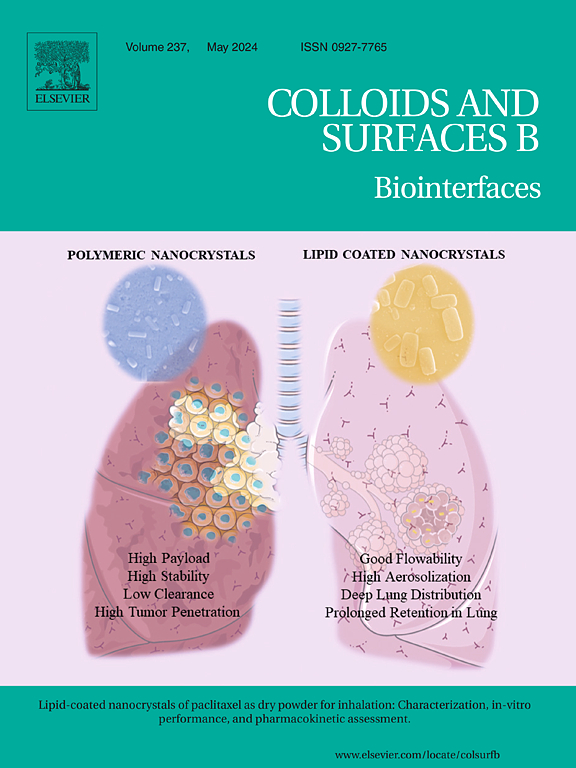Controlled-release of cinnamaldehyde from MXene/ZIF8/gelatin composite coatings: An integrated strategy to combat implant-associated infection
IF 5.4
2区 医学
Q1 BIOPHYSICS
引用次数: 0
Abstract
Infections and chronic inflammation surrounding titanium implants frequently impair angiogenesis and osseointegration, substantially heightening the risk of implant failure. In this study, titanium dioxide nanotube arrays (TN) were fabricated on titanium metal substrates to serve as reservoirs for cinnamaldehyde (CA). Subsequently, MXene and ZIF-8 were deposited onto the TN surface to seal the nanotube pores. Finally, the gelatin methacrylate (GelMA) hydrogel system was utilized as a nanoparticle-controlled release platform to construct the Gel@MX-ZIF8/CA functional integrated coating. The results demonstrated that the Gel@MX-ZIF8/CA coating exhibited optimized roughness, improved hydrophilicity, and superior bioactivity. Furthermore, the Gel@MX-ZIF8/CA coating exhibited robust antibacterial efficacy against Escherichia coli (E. coli) and Staphylococcus aureus (S. aureus). At the cellular and molecular levels, Gel@MX-ZIF8/CA modulated mouse macrophage cells (RAW264.7) polarization toward the M2 phenotype, enhanced human umbilical vein endothelial cell (HUVEC) angiogenesis, and facilitated the osteogenic differentiation of mouse embryo osteoblast precursor cell (MC3T3-E1). In vivo studies using a rat bone defect model highlighted the coating's strong anti-inflammatory, antibacterial, angiogenic, and osteogenic capabilities of Gel@MX-ZIF8/CA. Additionally, Gel@MX-ZIF8/CA exhibited excellent blood compatibility and biosafety. In conclusion, the Gel@MX-ZIF8/CA coating integrated multiple advantages, offering significant potential in addressing orthopedic implant-associated infections and bone defects.
求助全文
约1分钟内获得全文
求助全文
来源期刊

Colloids and Surfaces B: Biointerfaces
生物-材料科学:生物材料
CiteScore
11.10
自引率
3.40%
发文量
730
审稿时长
42 days
期刊介绍:
Colloids and Surfaces B: Biointerfaces is an international journal devoted to fundamental and applied research on colloid and interfacial phenomena in relation to systems of biological origin, having particular relevance to the medical, pharmaceutical, biotechnological, food and cosmetic fields.
Submissions that: (1) deal solely with biological phenomena and do not describe the physico-chemical or colloid-chemical background and/or mechanism of the phenomena, and (2) deal solely with colloid/interfacial phenomena and do not have appropriate biological content or relevance, are outside the scope of the journal and will not be considered for publication.
The journal publishes regular research papers, reviews, short communications and invited perspective articles, called BioInterface Perspectives. The BioInterface Perspective provide researchers the opportunity to review their own work, as well as provide insight into the work of others that inspired and influenced the author. Regular articles should have a maximum total length of 6,000 words. In addition, a (combined) maximum of 8 normal-sized figures and/or tables is allowed (so for instance 3 tables and 5 figures). For multiple-panel figures each set of two panels equates to one figure. Short communications should not exceed half of the above. It is required to give on the article cover page a short statistical summary of the article listing the total number of words and tables/figures.
 求助内容:
求助内容: 应助结果提醒方式:
应助结果提醒方式:


